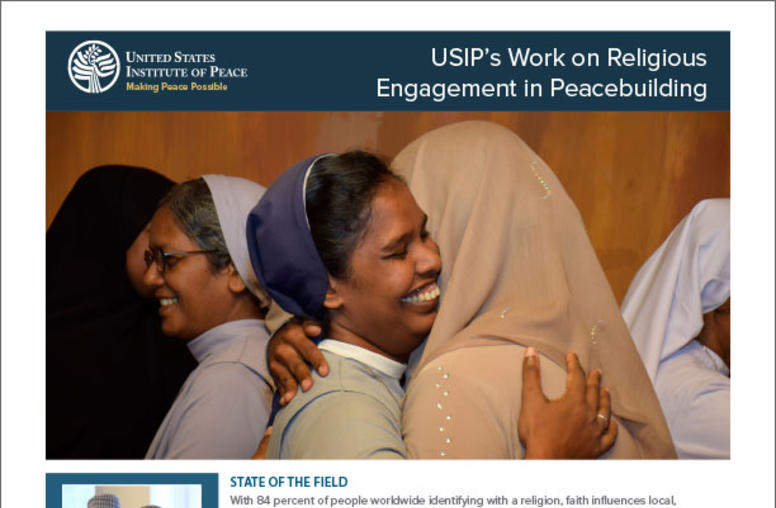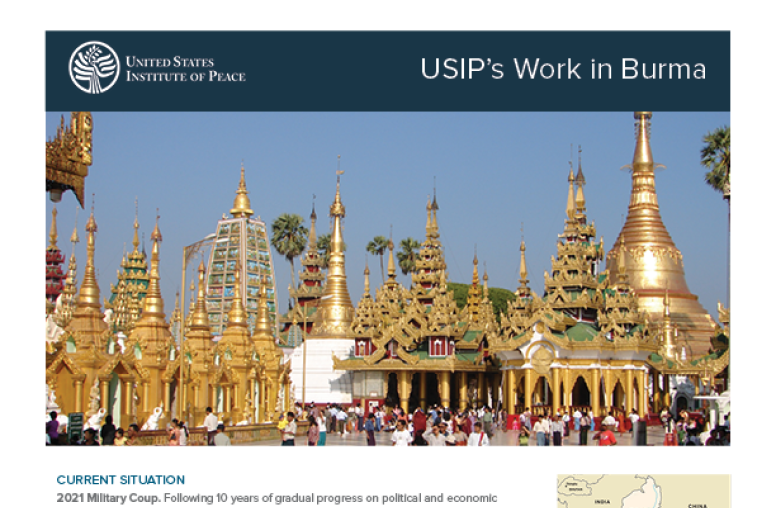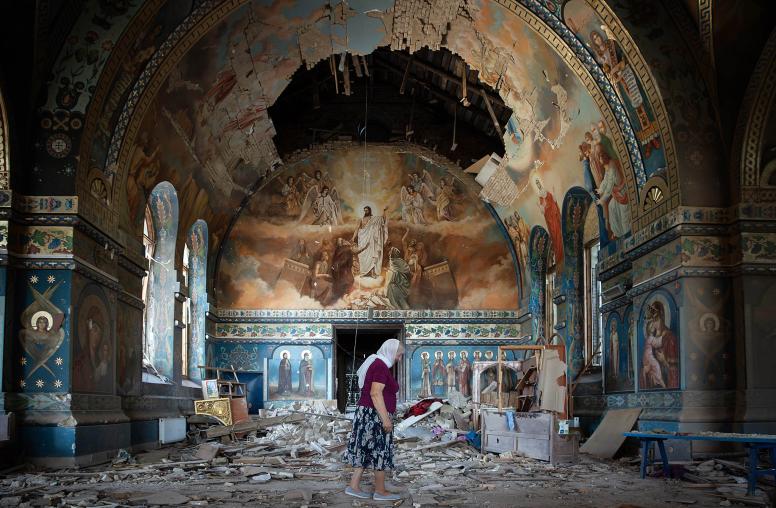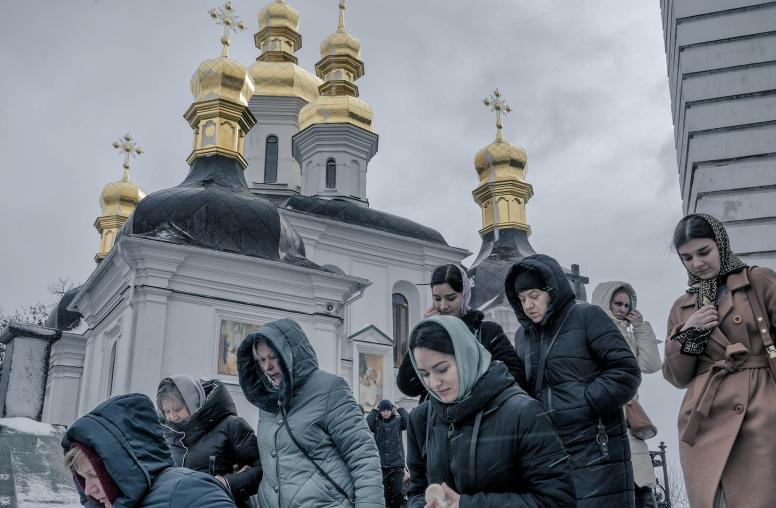How Teaching Tolerance Can Promote Peace
Making tolerance-focused education a priority can help students prepare for an increasingly diverse world.
Instability, conflict and human rights abuses are daily occurrences worldwide, often driven by hostility based on religion, belief or ethnicity. As policymakers look for ways to get upstream of potential human rights abuses, tolerance education can play a crucial role in preparing students to live in peace in our increasingly diverse world. The Transforming Education Summit, to be convened by U.N. Secretary-General António Guterres on September 16-19, provides an important opportunity to elevate tolerance education into the global education movement.

The summit concept note recognizes education is “a foundation for peace, tolerance, other human rights and sustainable development.” However, the summit’s agenda does not focus on ways to harness the power of education to promote these important values. Prioritizing tolerance education can help promote peace, stability and human rights. The summit represents an opportunity to bring international attention to this missing aspect of global education strategies.
What is “Tolerance” Education?
“Teaching tolerance” is shorthand for a basket of concepts regarding the value of multi-faith understanding, the benefits of pluralism and the importance of human rights and freedom of religion or belief. Because of our increasingly diverse societies, tolerance should be a core component of any effort to support basic education — as well part of the summit agenda. However, very few international organizations or donors prioritize teaching students how to live with diversity through cross-cultural learning.
Our work at USIP engaged a variety of practitioners, educationalists and diplomats from around the world about best practices. We convened roundtables with individuals working on programs to promote religious tolerance through education from Afghanistan, Iraq, Israel, Jordan, Lebanon, Morocco, Pakistan, United Kingdom and United States, among others, as well as the United Nations and the Organization for Security and Co-operation in Europe.
Irina Bokova, a former UNESCO director-general from 2009 to 2017, provided insightful guidance based on her U.N. experience. “Education should be about values, values of human rights, of mutual respect, of respect for the nature and of humanity, of living together,” she said. “We must move beyond literacy and numeracy, to focus on learning environments, on new forms of learning.”
While immense challenges exist to meet needs in reading, writing and mathematics, choosing not to support tolerance education is also a decision. Inaction will ensure children are exposed to ideas of fear or hate of the “other” without the tools to see through misinformation, thus leading to continued human rights abuses and instability. Children may learn to count and read but will be ill-prepared to live in an increasingly diverse world.
Incorporating Tolerance in the Classroom
Practitioners were adamant about the need to prioritize textbook reform that promotes positive views of multi-faith tolerance, pluralism and human rights. Textbooks are the lynchpin in any education plan. Often used for years, they provide a foundation for student learning and teacher programming.
And in many contexts, there is an urgent need to update them. The international community should empower local actors to develop culturally appropriate materials that promote multi-faith tolerance, the benefits of pluralism, human rights and religious freedom.
Teacher training should go hand in hand with textbook reform, equipping teachers to welcome pluralism and create a positive classroom environment. It is critical both textbook reform and teacher training be supported simultaneously. Otherwise, improved textbooks will lay under-utilized by ill-equipped teachers, or teachers appropriately trained will lack supporting materials to incorporate. A “twin-track” approach of simultaneously improving textbook “hardware” and teacher training “software” will bring the most durable results.
Tolerance Education is a Community Effort
Encouraging change will take a mix of public and private engagement with government officials, elected leaders, parents, community and religious leaders, and faith-based actors. A healthy ecosystem for multi-faith understanding requires engagement with all these groups, as what children are taught is sensitive in every society.
For example, USIP has partnered with the Alliance of Iraqi Minorities (AIM) on curricula reform. AIM has “focused on including more examples of multiculturalism and conviviality in the curriculum, a balanced compromise between the need for integration and minority concerns of assimilation.”
Their engagement is working. Based on AIM’s recommendation, the Ministry of Education in Baghdad “will modify second-grade Islamic religious curriculum to highlight Armah, the seventh century Christian king of Abyssinia and Axum. The king was known for providing generosity and refuge to Muslim pilgrims in what is modern-day Ethiopia, serving as an example of religious coexistence.” Additions like this are small but important steps.
Religious leaders also have an essential role to play. Faith leaders can set a positive framework for education about pluralism and human rights. Initiatives such as the Document on Human Fraternity, signed by Pope Francis and the Grand Imam of Al-Azhar, Ahmed Al-Tayeb, provide leadership for other clerics. And in the most egregious situations, the international community should prioritize pressing government partners whose education materials promote violence toward “the other,” especially if governments share them outside their home country.
A Long-term Commitment
However, none of this will happen without a decades-long commitment to fund tolerance education. We need consistent, specific and — importantly — additional funding for tolerance education from the international community.
Textbook reforms and teacher training will require additional resources, not a siphoning off already inadequate funding. Specific, annual funding from the international donor community would equip educators, practitioners and communities to teach children how to live with diversity and inoculate them against narratives of hate and violence. Funding this work has the potential for positive effects in ways yet to be fully explored or tested.
In conclusion, at a time of increasing diversity — and increasing intolerance — emphasizing tolerance through education is crucial. Irina Bokova summed up our findings and challenges when she said, “Teaching tolerance, respect for cultural diversity and human rights is an essential part of bringing peace.” She also stressed, “There is the need to put education into the forefront of public policies, a need of a global Marshall Plan for education. Unfortunately, we see shrinking of national budgets and development assistance for education generally, let alone education for peace and tolerance.”
Teaching tolerance requires a long-term commitment. And, with lasting support, such efforts can foster greater respect for human rights and positively equip students to succeed in a diversifying world. The Transforming Education Summit provides a unique opportunity to recognize the importance of tolerance education in global strategies and assemble the needed resources. Hopefully, tolerance education will be part of the solutions emerging from the summit.



